Skip the boxed cracker! Making your own homemade Saltines From Scratch is easier than you think, tastier than store-bought, and fun to make at home!
Next, try our Copycat Chicken in a Biskit Crackers!
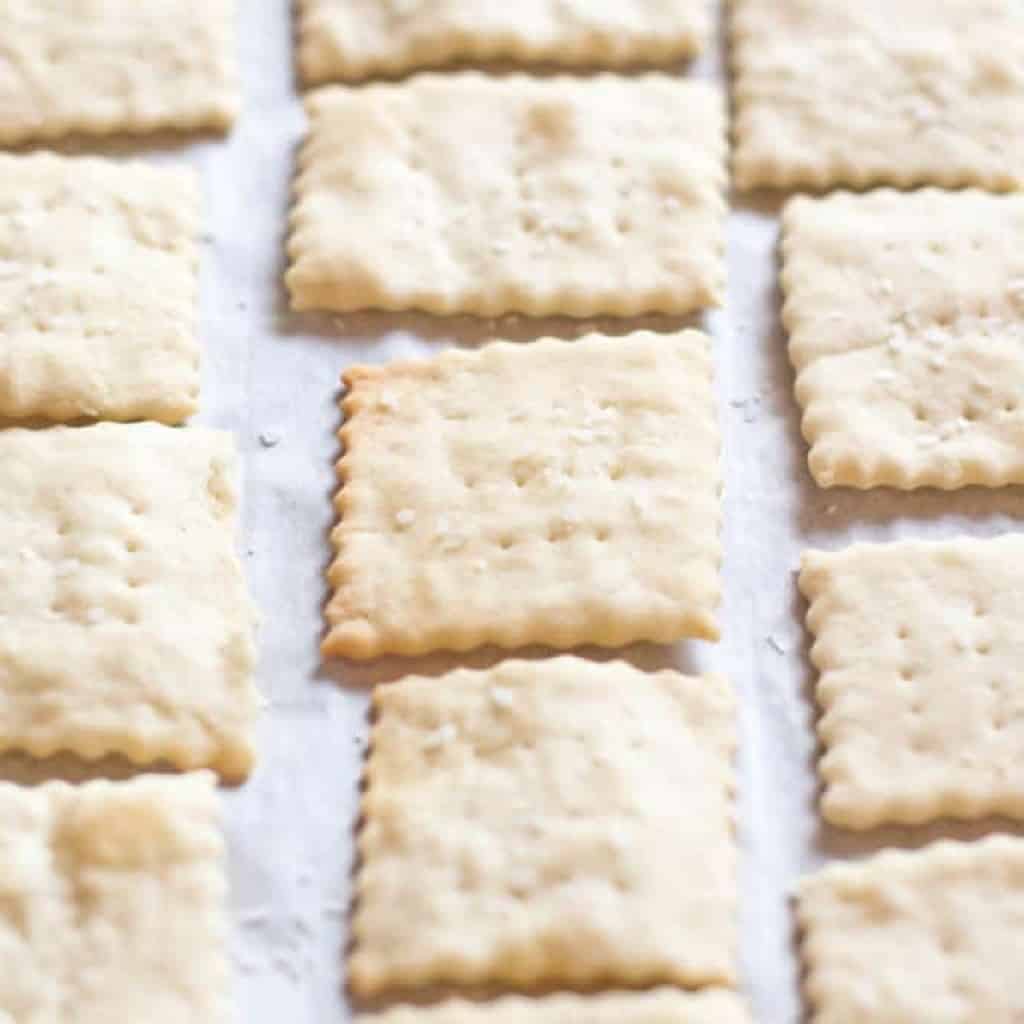
Who doesn't love a good ol' classic that's made from scratch? These homemade Saltines From Scratch are exactly that! Who doesn't know and love these classic crispy, light soda crackers? So versatile, but also so surprisingly easy to make, but also so incredibly satisfying knowing that you made one of your favorite crackers from scratch!
Ingredients Needed
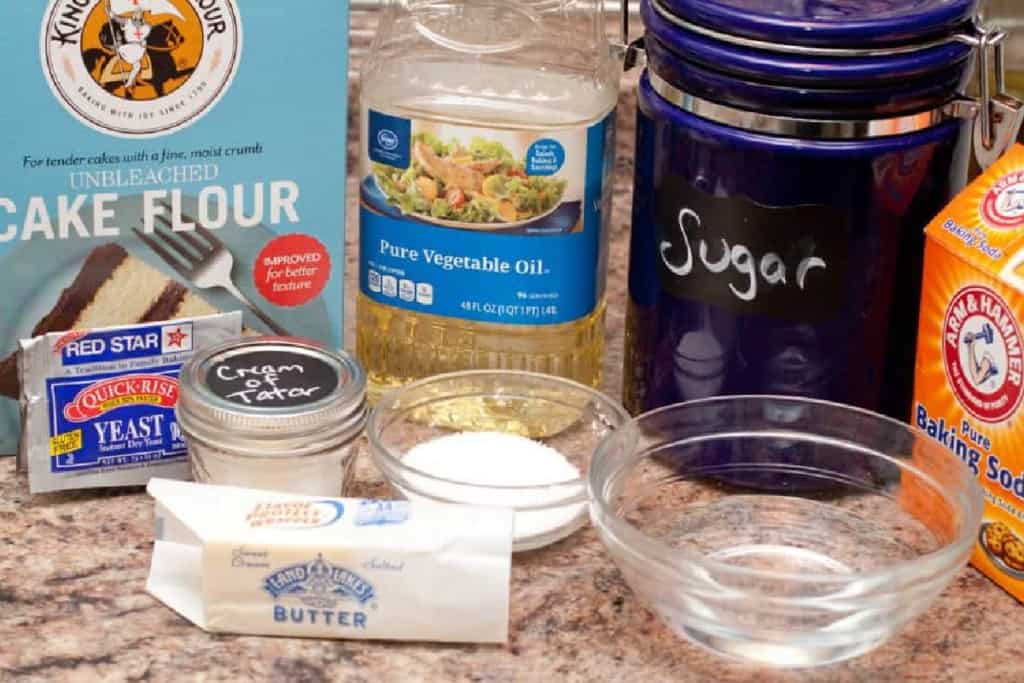
- Semonlina or Cake Flour - The most important part of getting the right texture for these classic soda crackers is to start with a flour of the right texture. All purpose flour isn't going to cut it, you need a flour that's ground extra fine like a cake flour or a fine semolina flour.
- Butter - Key not only for the texture of the cracker dough, but also to add the right flavor.
- Vegetable oil - Also key to getting the right texture of the dough.
- Instant yeast, Baking Soda, and Cream of Tatar - Your leavening agents which create the right amount of air within the crackers to create the signature texture.
- Sugar - Just a touch for flavor.
- Salt - For the dough and to finish with.
Pretty simple, right?
How to Make Saltines From Scratch
While of course it takes more time and effort to make homemade crackers the payoff is huge! Plus, they can be made in some pretty manageable steps.
- Make the dough
- Let it chill
- Roll out
- Bake!
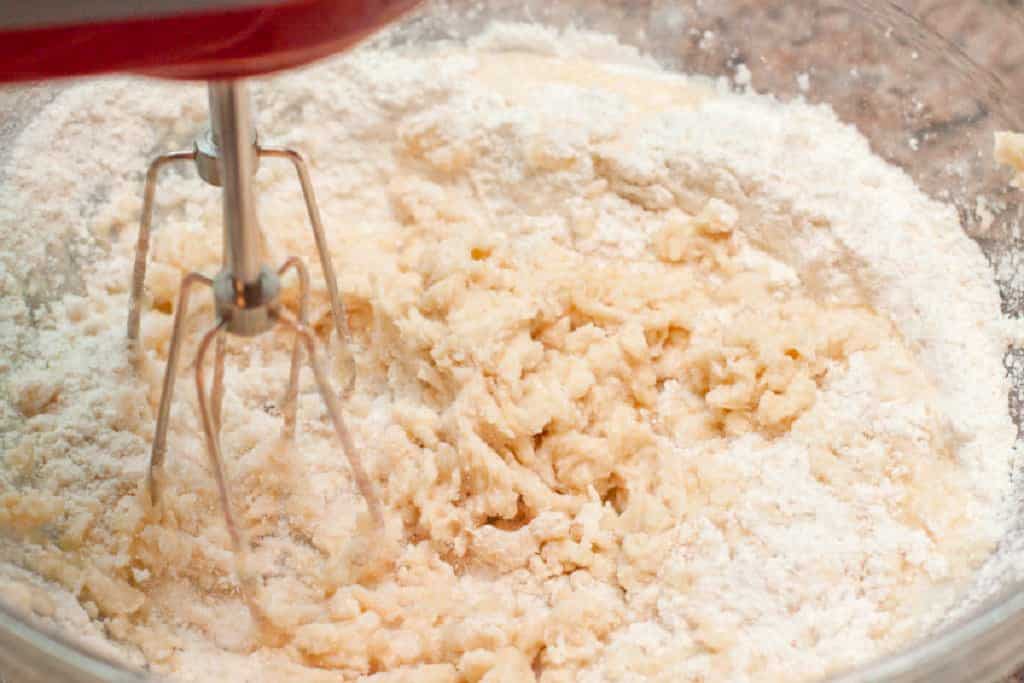
Make the dough
This requires melting butter in with water and oil, mixing the dry ingredients, and then mixing them all together. You can do this with a hand mixer or a wooden spoon.
Chill the dough
By chilling the dough, it will make it much easier to work with and roll out. I usually like to prep the dough the night before I plan to make them so that the dough is ready to go the next day.
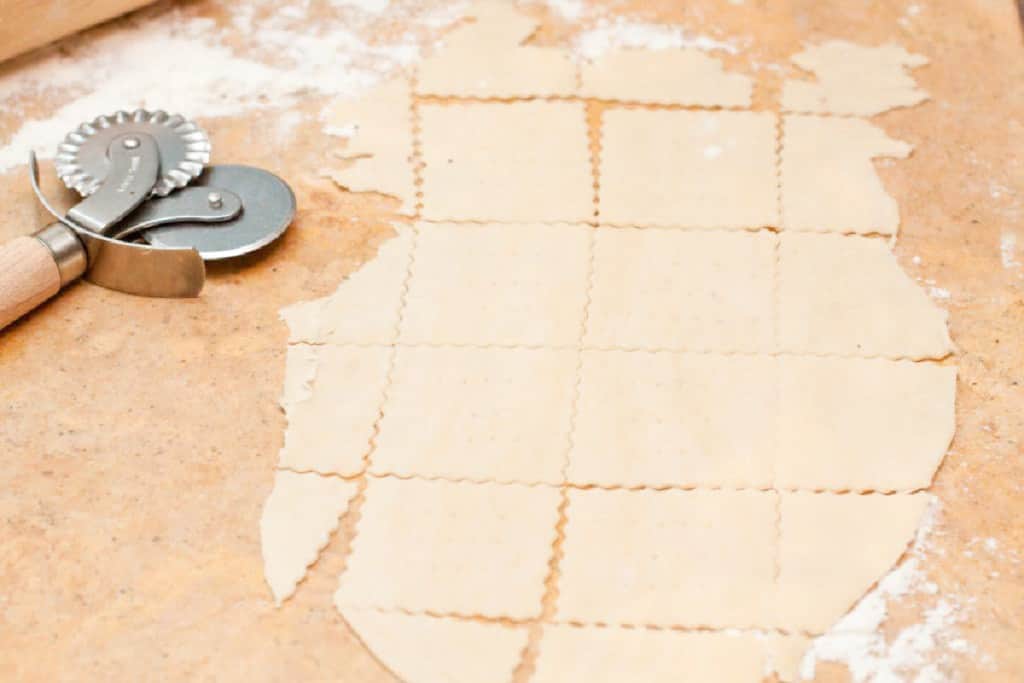
Roll out dough
This is key to getting the thin crispy crackers you know and love! You can of course use your favorite rolling pin to achieve this, but you can also use a pasta roller to get your dough really really thin. The thinner the cracker, the better, for sure.
Just like with homemade pasta, start thick and work your way thin, slowly as to not tear the dough. Then, back onto your floured surface and I even gave it another roll with the pin before cutting them with the pasta wheel cutter.
Then just some pricks with a fork and onto a parchment-lined baking sheet and a brush with a touch of water and a sprinkle of sea salt. They can be right up next to each other on the sheet, they won't expand at all. They'll actually shrink a little.
Tip: If you're able to roll the dough out very thin, you can also roll the dough right out on the parchment paper and cut the crackers right on the paper. Similar to how we make our Everything Bagel Rye Crackers.
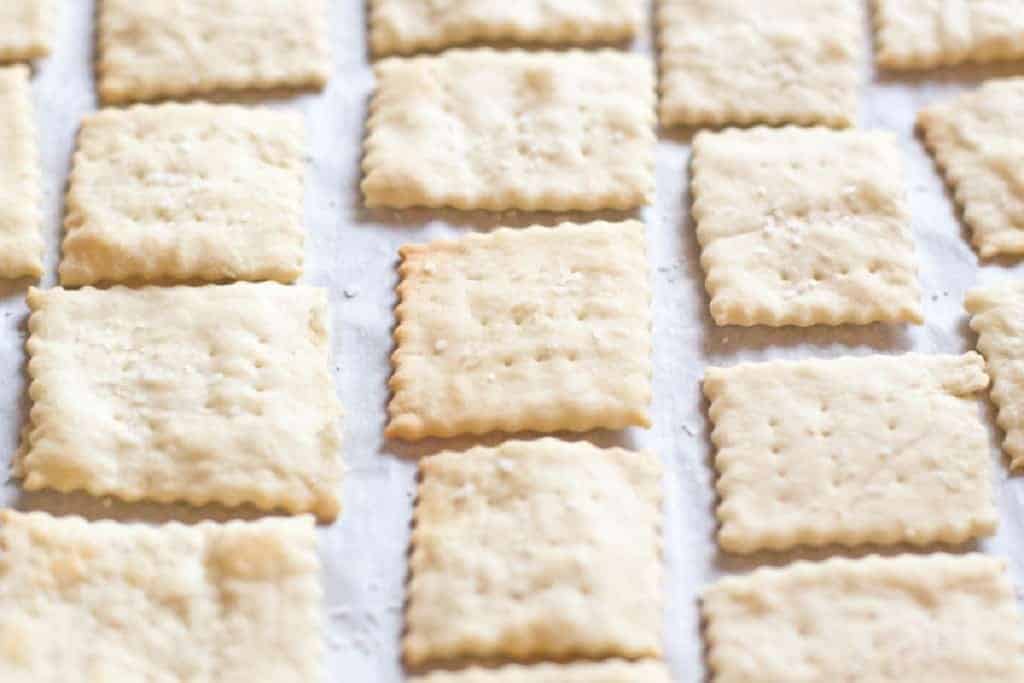
Bake!
Baked at 400 degrees for 8-10 minutes (be sure to check them, they'll brown quickly!), and you have your very own homemade Saltines From Scratch soda crackers!
When I tried the first one, I'm not going to lie, I did a little dance then texted my husband, "OMG I made Saltines that taste like Saltines!" Even with the added effort, we will definitely be adding these guys to our regular rotation of crackers. I wanted to have them with some homemade soup, but they definitely didn't last long enough. Oh well, just an excuse to make more!
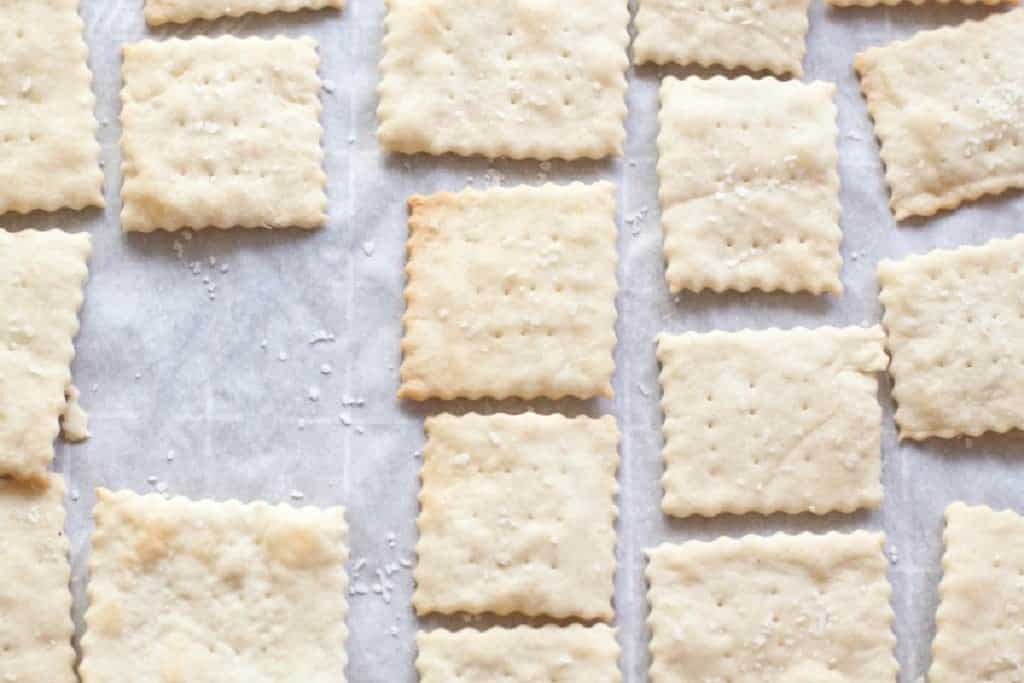
Perfect with a big bowl of soup or as the base for your favorite dip or other appetizers. These homemade soda crackers will add some from scratch flair to any dish you use them in or serve them with!
Enjoy! As always, if you make this recipe or any of my others, I love to hear what you think! Leave a comment below, email me, or you can find me on Facebook, Instagram, and Pinterest!
If you want to see more, be sure to sign up for my 5 Easy Ways to Start Cooking From Scratch!
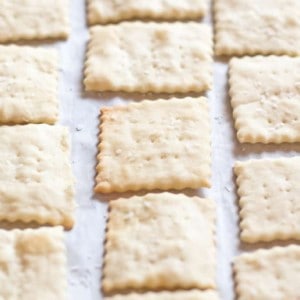
Saltines From Scratch
Equipment
Ingredients
- 1 1/2 cups cake flour
- 6 tablespoons water
- 2 tablespoons softened butter
- 2 tablespoons vegetable oil
- 2 teaspoons instant yeast
- 1 teaspoon sugar
- 1/4 teaspoon baking soda
- 1/4 teaspoon cream of tatar
- 1/2- 1 teaspoon Sea Salt or Herb Salts for topping
Instructions
- Add flour, yeast, baking soda, cream of tatar, and sugar to a medium sized bowl. Whisk together.
- In a small sauce pan, add butter, oil and water and heat gently until butter is melted. Let cool to 120 degrees, or where it's still hot, but doesn't burn to the touch.
- Make a well in the whisked together dry ingredients and then pour in the butter. With an electric mixer, beat well on medium then on high until all the butter is incorporated and a dough begins to form.
- With your hands, knead together the dough into a ball. If the dough is too sticky, add a touch more flour at a time. If it's too dry, add a tiny bit of water at a time. It should be a nice soft ball of dough.
- Lightly grease the bowl and cover it with plastic wrap and let rest in fridge for at least 12 hours and up to 18 hours.
- When you're ready to use, take the bowl out of the fridge and let the dough come up to room temperature, about 15 minutes.
- Pre-heat oven to 400 degrees and line large baking sheets with parchment paper, or grease them.
- Remove dough from bowl and knead it for a couple of minutes until it is smooth and clay like.
- Divide it into 4 pieces and roll each piece out at a time. Use a pasta roller to get the dough as thin as possible - this will make for a much better, crunchy cracker.
- With a rolling pizza wheel or pasta cutter, cut out 2X2 squares. Transfer squares to the baking sheets. The squares can be right next to each other, squeeze as many as you can in, they will actually shrink in size as they bake. Do this with all of the remaining dough.
- With a fork, prick each cracker to get the classic "Saltines" perforations. Brush each cracker with a little bit of water and then sprinkle with salt / herb salt.
- Bake for 8 - 10 minutes, checking at 8 to ensure they're don't brown too much (unless you like a super crispy cracker like my husband does!)
- Remove from oven and let cool on tray.
- Store in an airtight container for up to a week - if you can hold back from eating them all that long!


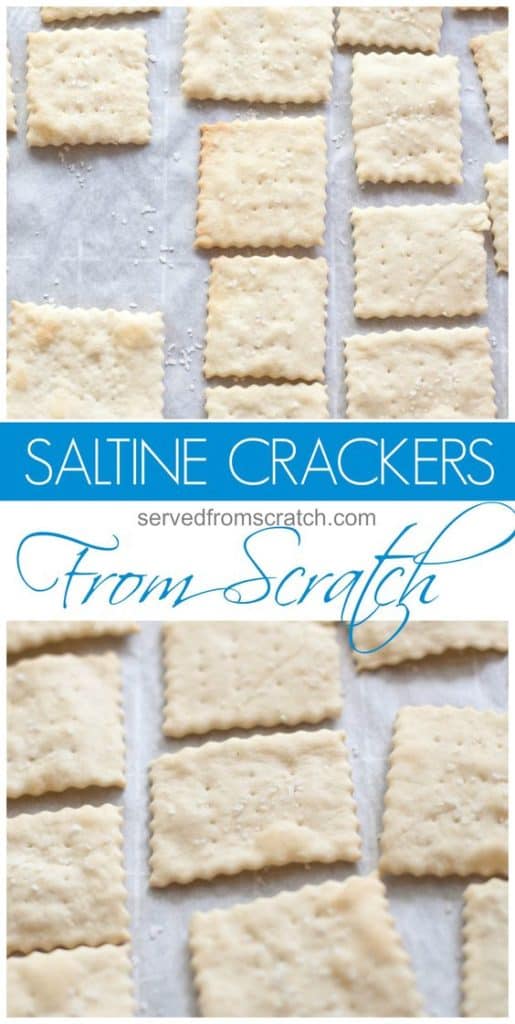
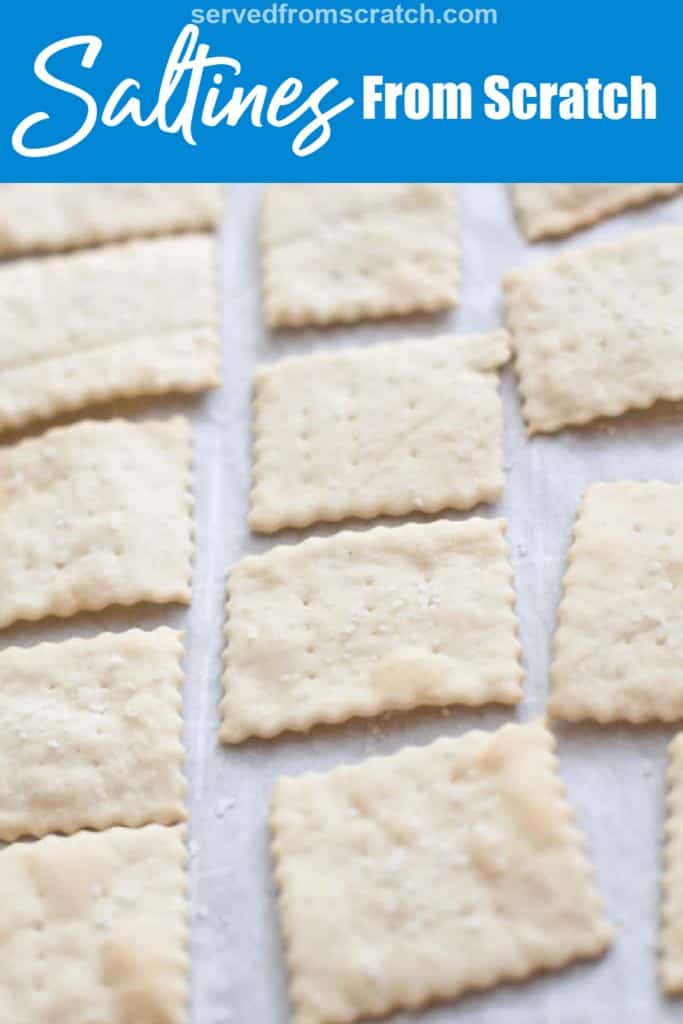
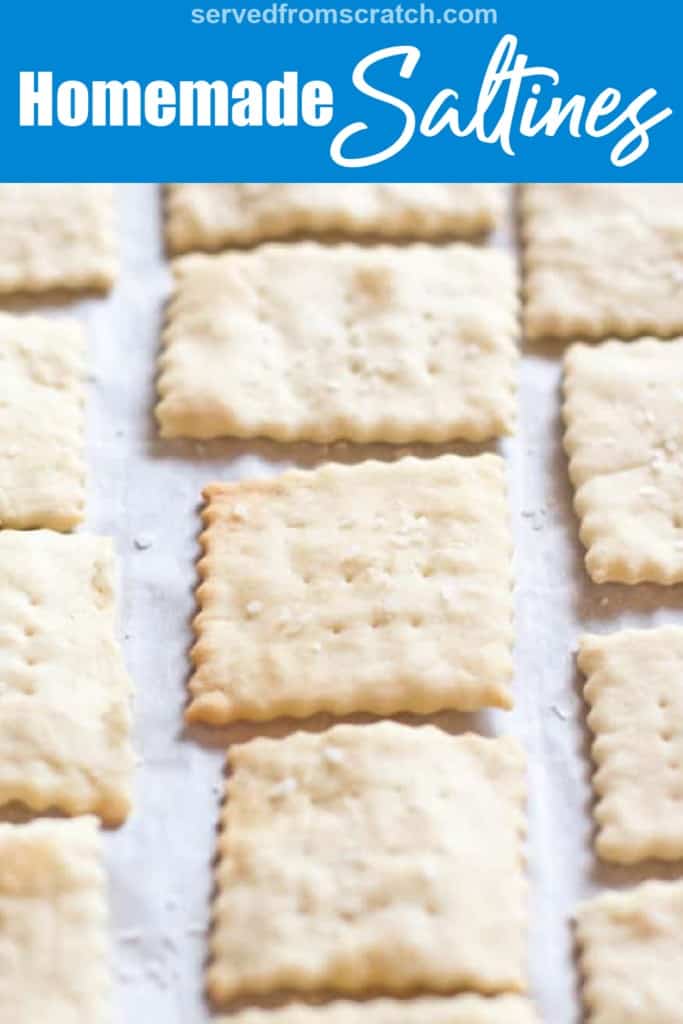
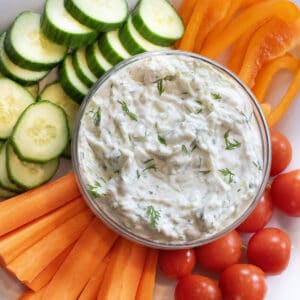
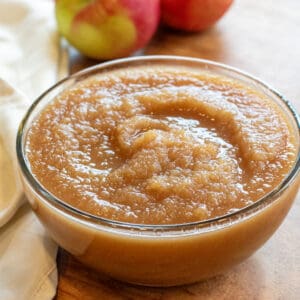
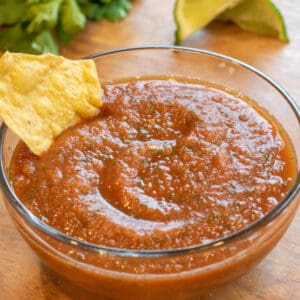
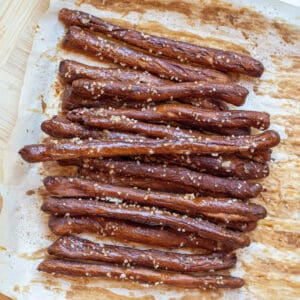

We LOVE making these saltine crackers. They are better than the store-bought crackers and too easy to make. I can't make these fast enough so I need to double the batch next time. Thank you so much for sharing the recipe!
only problem with this recipe is that within 24 hrs from coming out of the oven they seem to vanish. I substituted butter flavored Crisco for the butter and made by own cake flour by removing 3 tablespoons of all purpose flour and replacing with 3 tablespoons of cornstarch. Turned out great.
Ha! So true! So wonderful to hear, Marilyn! Thanks so much for sharing!
Thank you so much for sharing this amazing saltines from scratch recipe! Will surely have this again! It's really easy to make and it tasted so delicious! Highly recommended!
Great to hear, Allyssa!!
Ok, I love making crackers. This recipe is simple and straightforward and the end result is a crispy and tasty saltine cracker. The rolling pin method worked for me, but I like rolling dough so I had no trouble.
Wonderful to hear, Jere! Thanks so much for taking the time to leave a review!
Can you make these with gluten free AP flour?
Hi Miranda, I have not tried it with gluten free all purpose flour. I would suggest for a gluten free option to try gluten free cake flour, first because that flour will have a similar consistency to the flour use for this recipe.
Cream of tatar? 🙂
I made this recipe the other day, they smell like saltine crackers but the taste and texture is different, I used A.P flour but other than that no change of ingredients, I learned from school that baking is an exact science so I think there is something amiss with the ingredients
Hi! Although it may not seem like there's much of a difference, there is between AP flour and cake flour. Using AP Flour is what made your texture off. If you can get it, cake flour will give you more of that classic saltine texture 🙂
I don’t have a pasta roll machine. But would definitely like to try this anyway. What are the issues with hand rolling these out? I’m guessing I’ll need a floured surface, or should I use an oiled surface? Hmmm...
Hi Kathleen! You can definitely roll by hand on a floured surface. The only issue is making sure that they're nice and thin - the thinner the cracker the crispier it'll be!
well. your teacher was an idiot then. because baking is nothing close to an exact science.
The teacher is not an idiot. Cooking isn't exact, but baking is. Is is pure chemistry, and that is a science.
Mine turned out more like water crackers. They were still very good, I love water crackers. But I'm wondering if I worked the dough too much???
If you read the post you'll see where Tracy states the importance of the flour. I've tried many times to make crackers with no success. Once I tried making it with our fine semolina flour the crackers were perfect.
Thank you so much, Marisa!
Perhaps the problem is that the ingredients called for cake flour and you used all-purpose flour, which was specifically said not to work so well for this recipe.
These actually taste just like saltine crackers! I'm super impressed! I had to substitute cornstarch for some of the flour as I only had AP, not cake flour. I also found that #7 on my pasta roller (the thinnest) was too thin, so I did #6. I only cooked them about 4-5 minutes, but my oven is a bit hot. I wondered some of the same things as Jeff above when I read the recipe, but they taste like the real thing, so who cares! Next time I'll try a herb & garlic or something. Do you think water would still work for adding the seasoning on top or should I use olive oil?
Oh thank you so much for sharing, Adria! I'm go glad you enjoyed them and great idea for substituting the cornstarch. Oh my gosh herb and garlic sound AMAZING. I'd guess water would work, but olive oil would add more flavor! Let me know how they turn out!
A note here: According to the Joy of Cooking, you can make an approximation of cake flour by substituting 1 cup sifted minus 2 Tb. flour for 1 cup all-purpose. I have also heard you can substitute cornstarch for some of the AP flour, but I'm unsure of the proportions or ratio. Cake flour has the least gluten, AP has a middling quantity, and bread flour has the most. You mention semolina (note correct spelling) in the opening comments but you don't use it in the recipe. Was it omitted or what? Last, I haven't made this recipe; I was looking for a good cracker recipe online and haven't found one yet. But I'm a bit put off by all the leavening ingredients—why so many? I wanted a plain cracker for cheese, not a cheese-flavored cracker, so yours seem like good candidates, but I'm puzzled. And BTW, I was a cookbook copy editor and proofreader for about 40 years, for New York publishers. These are the kinds of questions I would have asked a cookbook author. I only checked one star because it would not be fair for me to rate the recipe without trying it. Other cracker recipes I found used the very least amount of leavening—like 1/4 tsp. baking powder per 1 1/2 cups flour. Just as a for instance.
Hi Saralyn,
Thanks so much for all of those notes- all great and I’m sure that you’ve seen a lot and have a lot of great knowledge as a cookbook editor. However, I would like to point out that your logic about not leaving a review because you didn’t try it (I totally agree with), but by leaving ONE star, that IS reviewing it, isn’t it? It’s leaving a very poor one star review for a recipe that you didn’t try.
The one star rating and comment confused me too, Tracy. Leaving one star changes the average rating that people see at the top of the recipe AND when this recipe shows up with a Google search! Saralyn- you should do the right thing and update your comment to undo the rating. I’m pretty sure you don’t have to add a rating to post a comment or question.
Was scratching my head while making these. Have to say I did not like the results and, in retrospect, it should have been no surprise. Aside from spelling Cream of Tarter as Tater several times there are more obvious baking errors. Why is there yeast? And if there is, what good is it going to do sitting in a fridge overnight-- especially in low gluten cake flour?!? The leavening agent could be the Baking Soda (Sodium Bicarbonate) but it needs to have water and an acid to activate it -- unlike baking powder which includes an acid. No acid in the recipe. So yeah-- retarded yeast in low protein flour, with unactivated baking soda is gonna result is a flat biscuit like cake with minimal crispiness.
Good points, Jeff! Thanks for pointing them out and I'm going to take those things into account and revisit the recipe.
...and you could be kind enough to say that in a much nicer way!!
Imagine being so rude when you don’t even know what you are talking about. People like you who think they are experts when in reality they have no idea what they are talking about (and unnecessarily rude while doing so) are the the problem in the world. As someone else said, cream of tartar is an acid. Yeast is still active in the refrigerator, especially if youre leaving it in for 12-18 hours. When I make sourdough, I let it rise in the fridge overnight. True, you won’t get a huge rise with cake flour, but it will still contribute to small bubbles in the dough that will expand and contribute to a crunchy and flaky texture as they are baked. A high protein flour would lead to tougher crackers that don’t have the same snap that would be expected from saltines. Also who cares about typos if you can still understand the recipe. Thanks for the recipe Tracy, can’t wait to try it.
Jeff, cream of tartar is an acid -- it's also known as tartaric acid -- so it will react with the baking soda.
Not sure if my previous comment was published. Imagine being this rude when you have no idea what you are talking about? People like you who have no idea what they are talking about and talk down to others even when they are wrong is a huge reason the world sucks. As previously discussed, cream of tartar is an acid. Yeast is still active in the refrigerator. When I make sourdough, I leave it in the fridge overnight to rise. True, you won't get a huge rise with cake flour, but the yeast will still contribute to small bubbles in the dough that will expand and help provide a flaky and crisp texture as they are baked. Using a flour with higher protein would make the crackers chewy and not at all like saltines. Looking forward to trying this recipe, thank you Tracy. Apologies on behalf of Jeff.
Cream of Tartar is an acid.
I assume you mean cream of tartar, not tater. Don’t have cake flour ( back ordered in a pandemic) but will try it with pastry flour and keep fingers crossed it will work
we made these (yum!) and then used them as a base for saltine toffee bars (double yum!)
Omg that sounds amazing!!!
I haven't tried this recipe (yet!), but was looking for it specifically to make the toffee bars! Thank you for stating they worked great in it! 🙂
Oh, I bet the toffee bars were good!!